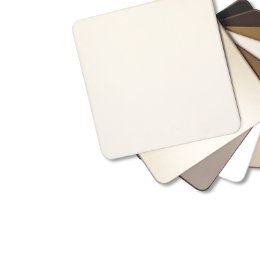Fire-Resistant Safety for Tall Buildings

Fire-Retardant Safety for Tall Buildings
In the mid-1970s, disaster movies were as popular as superhero movies are today. The biggest blockbuster of all was The Towering Inferno , featuring an all-star cast, a shoddily built skyscraper, and a raging fire too high up to fight effectively from the ground. People of a certain age still think of that movie as they ride elevators up to floors in the double-digits.
Their concern isn’t completely unfounded, as demonstrated by a series of skyscraper fires in Dubai – the latest being a spectacular fire last New Year’s Eve. The cause of that fire was the same as in The Towering Inferno: an electrical short-circuit. And, as in the movie, the catastrophic spread of the fire was due to shoddy construction. Composite cladding materials with a highly flammable plastic core allowed the flames to spread quickly to higher floors. Fortunately, there was no loss of life – but the economic loss was extreme.
In North America and much of the rest of the world, those flammable materials could never have been installed. The International Building Code, established by the International Code Council (ICC), includes strict requirements and tests for wall structures, specifically for the purpose of preventing the spread of fire up a building’s envelope. Ever since the ICC requirements have been in place, no similar fires have occurred anywhere in the U.S.
In conjunction with the Construction Industry Safety Group’s Safety Week and ICC’s Building Safety Month, we thought now would be a good time to discuss fire safety. Let’s take a look at the fire-performance characteristics we build into ALPOLIC® materials and the rigorous tests they must pass to keep people safe in the “vertical cities” so many of us live and work in today.
ALPOLIC® PE materials with polyethylene core
ALPOLIC® aluminum composite materials are built around two types of cores. ALPOLIC®/PE materials feature aluminum skins bonded to either side of an extruded polyethylene core, providing the rigidity and toughness of sheet aluminum, but at a lower cost, lighter weight and superior flatness and stability.
ALPOLIC®/PE materials are rated Class A under the ASTM E84 Standard Test Method for Surface Burning Characteristics of Building Materials. Also known as the Steiner Tunnel Test, ASTM E 84 measures flame spread and smoke density under a specific set of fire exposure conditions. In essence, this means that ALPOLIC®/PE materials are considered safe for use in structures under 40 feet high – approximately the limit of effective firefighting from ground-level using a ladder or platform truck.
ALPOLIC®/fr materials with fire-resistant core
The International Building Code requires greater fire resistance for wall structures at heights over 40 feet. Our ALPOLIC®/fr materials are designed to provide a highly fire-resistant skin for these walls. The fr core includes a small amount of polyethylene to enable extrusion of the material, but the bulk of the core is a proprietary mineral fill.
When surrounding flames bring this mineral fill to a high temperature, in the range of 350–420 degrees, it foams and releases water – about twice as much water by volume as the fr core occupies in its solid state. This water expands even further as it steams, providing very effective cooling of the flame. At the same time, a negligible amount of combustible material remains behind.
All by itself, the fr material can be ignited, but the flame won’t travel anywhere and is likely to be extinguished completely by the release of steaming water. When the core material is sandwiched between aluminum skins in the complete ALPOLIC®/fr product, ignition is very unlikely and spreading of flames is virtually impossible. ALPOLIC®/fr is the ideal cladding material to use for any building exceeding 40 feet in height.
Code compliance for wall assemblies
ICC 1407 includes fire-performance requirements for composite materials used on exterior walls. ICC Evaluation Services (ICC-ES) evaluates code compliance and issues a compliance report and certification number for materials that meet ICC 1407 criteria. These criteria are complex and varied, depending on a number of factors such as fire separation distances, whether plastic foam insulation is present, and many other details.
One of the most important criteria, listed under 1407.10.4, is that the wall system must pass NFPA 285 : Standard Fire Test Method for Evaluation of Fire Propagation Characteristics of Exterior Non-Load-Bearing Wall Assemblies Containing Combustible Components. This test evaluates the fire propagation characteristics of post-flashover fires of interior origin. The basic purpose is to ensure that a fire can’t “leapfrog” up the building skin, re-entering the building at a higher point than the floor where it originated.
NFPA 285 is a multi-story test procedure, requiring a two-story wall to be built in the test lab. A rectangular hole is punched through the wall near the bottom, representing a window that has been breached by the fire. Burners are ignited at the bottom of the window, and the fire is observed over a period of 30 minutes to ensure it never reaches a height of 10 feet over the window. Temperature measurements are also taken to ensure the fire never exceeds 1,000 degrees. This video shows the test being performed to illustrate the fire properties of an insulation material, but a test featuring ALPOLIC®/fr materials would look very much the same. NFPA 285 is a test of the entire wall assembly – from inside air to outside air – not of any single component.
In fact, a single component can be responsible for a failed test. For example, a wall assembly insulated with expanded styrene foam may fail the test because the styrene burns, even if all the other components are highly fire-resistant. That’s why we have tested, and continue to test, a variety of wall configurations as the need arises. We’ve performed successful NFPA 285 tests with a variety of air/water barriers, insulation materials and even composites faced with different metals than aluminum, such as copper-skinned metal composite materials.
Devoted to keeping tall buildings safe
It’s impossible to eliminate flammable materials from our built environment. And it’s impossible to eliminate all possible sources of ignition. What we can do is work tirelessly to minimize the risk. That’s why we designed ALPOLIC®/fr materials, and it’s why we work with a variety of industry partners to design and test wall systems certified to pass the rigorous NFPA 285 test.
So much of modern life happens in tall buildings, and ALPOLIC®/fr is helping transform architecture around the world with its affordable, attractive and enhanced fire-resistant choices.
We know you care about fire safety as much as we do. If you have any questions about fire performance and certifications, feel free to contact us anytime.
Let’s build.






